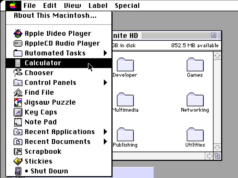
February is the shoulder season in many parts of the U.S. Though my entire winter garden was lost to a solid inch of frozen ice just two weeks ago, it’s been in the 50s the last few days, and the irises and tulips have started to emerge. Like most gardeners, this fills me with both excitement and anxiety with a capital A—am I already behind? You’re not, because February is the time to catch up. So in this, the shortest of all months, you have not one, but two jobs: Wrap up all the things you’ve not yet accomplished for winter, while preparing for spring. By the time we talk next month, we’ll be deep in seeding season.
Get your fruit positioned for an amazing season
We’re at the tail end of the work that’ll determine what kind of fruit harvest you’ll have. Start by pruning any fruit trees and shrubs you haven’t gotten to yet. This includes blueberries, currants, huckleberries, winterberries and all other berry shrubs. Prune and train your grapes, and prune back your fall-bearing raspberries. Check with your garden center to see if it’s time to prune summer-bearing raspberries and other cane fruit. If you’re planting fruit trees or shrubs this year, the window is now open. It’s also the right time to relocate any trees or shrubs that might do better elsewhere. I’m relocating a four-way cherry tree this year, so while I know it’s painful, the sooner the better. You can start planting rhubarb, too.
Once you’re done with the structural work above, it’s time to think about fertilizing all that fruit. Your garden center can help you with fertilizer specifically for fruit trees, vines and the special acidic fertilizer that blueberries love.
If you’re up for the challenge, consider cloche-ing or wrapping your strawberries to encourage an early fruiting.
Take care of your roses
As with fruit, now is the time to give your roses the late winter chop. If you’ve never really paid attention before, this kind of pruning helps encourage your roses to grow strong vines with prolific blooms. Just letting them grow without any pruning or training can result in scraggly and crooked vines. Check out a guide to pruning roses, sterilize your pruning clippers and wear arm protection. You’ll start to see roses in the garden center, and you can start getting them into the ground later in the month. All roses will benefit from fertilizer as well.
Now is the time to divide (some of) your plants
There are a wealth of plants in your yard that benefit from occasional dividing. Dividing gives plants more space to grow, more ability to absorb nutrients, and allow roots to flourish. They’re also two plants for the price of one. Now is the ideal time to dig into those herbaceous perennials and divide those suckers and relocate. To do so, you dig up the entire plant, generously going around the root ball. Lift it out of the ground, and then tease apart the roots with your hands or a sharp knife. You want each division to have at least three shoots. Replant them within the day, and give them a drink of water and a little shade for a few days. Now, this isn’t all perennials, but the fall blooming perennials. Asters, astilbe, iris, bee balm, blanket flower, bleeding heart, daylily, phlox, hosta, lambs ear, agapanthus, ornamental grasses, and sedum are some common plants you should look to divide.
Resist the urge to clean up
The first week of 50-degree weather sends everyone into their yards, eager to be back outside. While you should embrace the feeling, resist cleaning up the leaves and woody stems you so graciously left in fall. The beneficial insects that are using the leaves and stems to hibernate aren’t ready to exit quite yet. You’ll want to wait until closer to summer. In the meantime, those leaves and stems are becoming useful mulch and compost. Redirect the energy into tuning up your lawnmower for the spring and hunting down every slug and snail that survived winter.
On the precipice of seeding
We’re still too far out for most of the U.S. to seed tomatoes, eggplants, and your summer vegetables. You can, however, get a crop of spring vegetables started, including broccoli, cabbage, lettuce and other short crops. If you can find starts at the garden center, they can go in the ground about now, too. What can definitely go in the ground now are pea seeds, including sweet peas.
What you can seed right now is your earliest annual flowers: your petunias, portulaca, sweet alyssum and trailing nasturtiums, the flowers for your hanging baskets and window baskets. You can start your ginger and turmeric inside.
Mostly, you should use this time to get your seed starting supplies cleaned and sterilized with a mild bleach solution and ensure you have all the seeds you want for the year.








